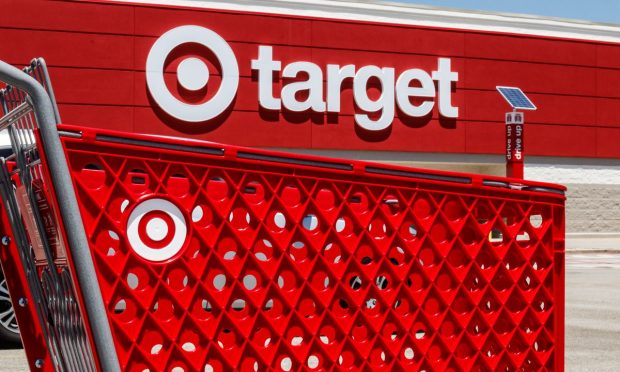Digital Drives Huge Gains in Target Grocery Sales

With the strength of its eCommerce business, Target is quickly becoming a major player in grocery. Discussing its third-quarter 2021 financial results on Wednesday (Nov. 17), the retailer announced comparable sales growth in the food and beverage category in the mid-teens percentage range, on top of mid-thirties growth in the third quarter of 2020, attributing this growth in part to the success of its digital investments.
“The position we’re in today in food and beverage is dramatically different from where we were five years ago,” Target CEO Brian Cornell told analysts. “We’re connecting with the guests. The quality, the assortment of value we deliver, is being really well received from the guests who shop our stores, and we’re seeing accelerated growth with our food and beverage business from a digital standpoint.”
On the call, Cornell noted that the retailer’s buy online, pickup in store (BOPIS) business has grown 400% over pre-pandemic levels. Throughout 2021, the chain has been increasing the available of groceries through eCommerce channels such as these. Earlier in the year, Target Chief Financial Officer and Executive Vice President Michael Fiddelke highlighted a finding that consumers who tried pickup or drive-up increased their grocery spending 20% to 30% compared to those who did not, and these shoppers also increased their spending in other, non-grocery categories by about 20%.
Related news: Target Says Buy Online, Pickup In Store Up 400% Since 2019
Target Expands Grocery Pickup Options As Food Spend Increases
Target saw the most sales growth with its fresh and frozen items as well as with its snacks and candy categories. Notably, the former two items are restricted to pick up channels or same-day delivery through Target subsidiary Shipt, while the latter is also available for buy now, get later (BNGL) shipping, which makes them available to a wider audience.
According to data from PYMNTS’ What Consumers Expect From Their Grocery Shopping Experiences, created in collaboration with ACI Worldwide, which surveyed more than 2,300 U.S. adults about their grocery purchases, 34% of consumers now buy groceries online, while only 18% of consumers prefer eCommerce options to in-store shopping.
You may also like: Digital Features Can Help Grocers Win Over 43 Percent Of Shoppers
Target’s 400% BOPIS growth is especially impressive considering the study’s findings that only 12% of grocery shoppers use the channel at all, and only 2% rank it as their most preferred. Meanwhile, 20% of consumers order groceries for curbside pickup, and 23% order groceries online to have the products delivered to their houses.
Last year, Target’s food and beverage business accounted for 20% of its overall sales, a year when sales totaled $92.4 billion. As such, with Target’s 2020 grocery sales totaling around $18.5 billion, the retailer is now in competition with many of the United States’ 10 leading grocers, and this year’s gains could secure the retailer’s spot as a top-ranking player in the space.
Unlike its larger competitor Walmart, for which the grocery category makes up more than half of all sales, Target is quick to deemphasize the role of grocery in its overall business, making it clear that the goal is not to become a food and beverage destination but to include these offerings among many draws to bring consumers into contact with its cross-category offerings.
“Food and beverage is certainly an incredible proof point that’s grown and driven share, acceleration and traffic, but we rely on all of our categories to play that role at different times of year,” Christina Hennington, executive vice president and chief growth officer for Target, told analysts. “So this is part of the strategy that’s accelerating the relevance for the consumer across the board.”
